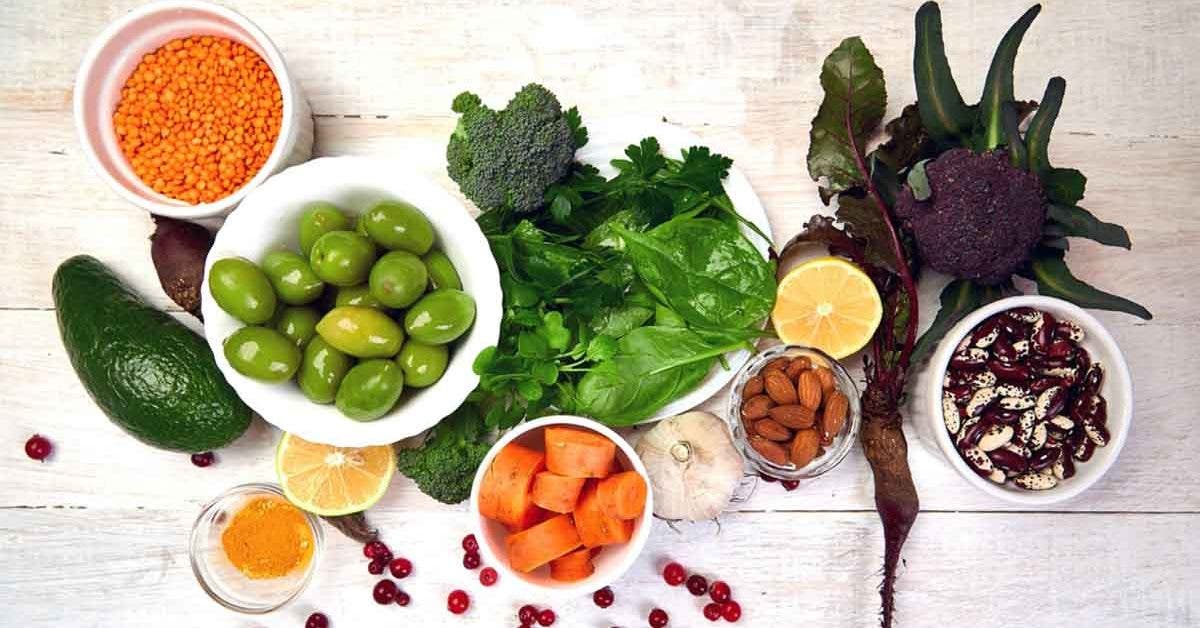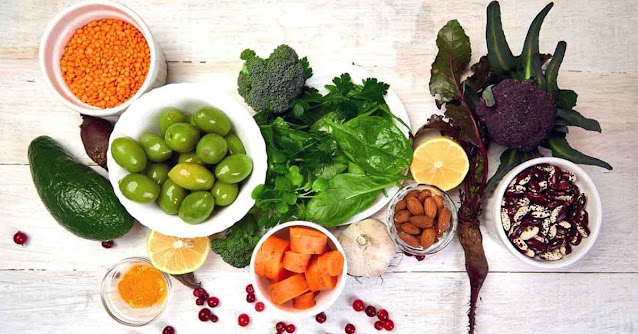We think of him when “liver attacks” occur, which have nothing to do with this fundamental organ of our digestive system. An ultra-efficient filter, the liver eliminates all toxins from the body and protects the immune system. Here are the plants that rekindle the flame of your liver!
This is what your doctor explores when he insistently palpates your right flank, just below the diaphragm. He systematically checks its volume, because the liver, the largest gland in the body, is of paramount importance for our general metabolism!
Often this silent worker is wrongly underestimated because our health fundamentally depends on his. Among its many functions, the liver is an essential filter that rids us of unwanted elements. In other words, he cleans up. But how does it work?
The liver filters all of the venous blood from the spleen and the intestine as well as part of the arterial blood from the general circulation. A first blood purification is ensured by immune cells (Kupffer cells or macrophages of the liver). These particular white blood cells literally devour bacteria, large molecules and foreign bodies picked up by the blood. Like the macrophages of the spleen, these Kupffer cells also participate in the elimination of toxic pigments resulting from the destruction of red blood cells that have reached the end of their life.
A fearsome chemical processing plant
Not only does the liver filter, but it has a great capacity for transformation. Indeed, it has cells specially designed to store and release sugars (carbohydrates), proteins and lipids (fats). These cells are called hepatocytes and constitute 80% of its weight. The liver can be likened to a huge chemical transformation factory thanks to the molecules and biological reactions it produces within its hepatocytes.
In particular, it is responsible for the internal synthesis of cholesterol and most of the proteins found in circulation in the blood. It is always in this sophisticated plant that we witness enzymatic detoxification, a series of chemical reactions allowing the neutralization of substances with high activity, or even toxic, produced by the body or coming from outside.
Why do you have to worry?
It is also the hepatocytes that secrete bile, a liquid with a particularly bitter taste involved in the general process of digestion. Then, like small streams feeding a river, the bile flows in small channels, to then unify into a single channel oriented towards the bile ducts flowing into the digestive tract at the level of the duodenum. Bile, characterized by its yellow color, actively participates in the detox process, playing a decisive role in the transformation and elimination of various products:
Pigments from the breakdown of red blood cells (bilirubin), type A immunoglobulins, drugs, cholesterol, etc.
Know that these depollution operations are carried out with exchanges and reabsorptions in permanent round trip between the liver and the intestine: it is the famous enterohepatic circulation where the bile salts are recycled.
A colossal energy budget
25 tons of food would be eaten on average in a lifetime! Once digested by the digestive tract, these 25 tons pass through and are processed by the liver. This represents the largest load of toxins and antigens that the human body has to manage: 79% of the energy budget consumed by the liver and kidneys goes through these operations.
But the bill can be even heavier. Because, when the intestinal barrier function is impaired, for example by the presence of an imbalance of the microflora (dysbiosis) and an increase in the permeability of the intestinal wall, the liver undergoes an additional workload. In this case, the liver mobilizes highly complex processes involving chemical reactions that can vary depending on heredity, environmental pollution and the possible existence of a disease that weakens the liver (hepatitis, drugs, etc.). All this is extremely costly for your body in terms of energy. Remember that you are the one who has to pay the bill! We understand better why it is advisable to regularly support the liver in its work of detoxification.
Detoxification and Drainage?
It's the same thing ! Naturopaths refer to detoxification as “drainage”. This outdated name, which was long ignored or despised by doctors, nevertheless hides an essential function of our body. A function that is based on a very scientific reality: it allows us to eliminate the waste generated by our metabolism, and by adaptation, waste from the outside, also called xenobiotics. Corresponding to precise biochemical mechanisms, detoxification therefore encompasses the biochemical cellular reactions transforming molecules initially insoluble in water (and very attracted to fat) – which are primarily the waste products of our own metabolism – into molecules that can be eliminated by presence of water. Detoxification represents this ability to evacuate these toxins, generally very reactive, which can be eliminated in an aqueous medium such as stools, sweat, breathing, bile or urine... via as many organs qualified by naturopaths as emunctories (or organs of elimination). Drainage, or detoxification, is therefore a natural response to eliminate microbes, organic waste and substances known to be toxic, i.e. anything that appears harmful to the body. It aims above all to restore a biological balance.
And this is where the liver plays its role of star: these biological transformations occur mainly in its cells even if they also exist on a lesser scale in all the tissues of the body such as the lung, the kidney tissue or the intestine.
Note a particularity taking place at the intestinal level: the food bolus systematically undergoes a first detoxification by the action of the intestinal flora, even before that practiced by the cells of the liver. We understand why an imbalance of the intestinal flora can increase the detox work of the liver.
Patience: the detox is done in two phases
The cellular enzymes that govern the biological detoxification reaction are modulated by genetic factors. But not only. External factors also come into play, such as the general condition of the subject or the nature and quantity of the toxic substance present.
Most of the toxic molecules processed actually undergo a double detoxification reaction in the liver. The first phase, or phase I, called the functionalization phase: the hepatocyte adds a so-called “functional” chemical radical to the toxic molecule using enzymes called cytochromes. The result gives an intermediate product that is paradoxically often highly reactive and sometimes more toxic than the initial toxic… but this operation aims to quickly prepare the next step.
In phase II, called conjugation, a new chemical radical is attached to the first, allowing the solubility of the toxic molecule. And who says solubility says possibility of elimination by different natural ways having as vector water.
In summary, the toxicity of a substance can be defined by its strong chemical reactivity associated with insolubility in water... And detoxification, the ability to make a reactive molecule soluble that was not.
Do you need to boost your liver?
When our liver is fatigued or our detoxification system overwhelmed by an ongoing disease state or pollution, certain symptoms may appear. Here is a table of the main clinical signs suggestive of liver weakness which, combined, should make us consult and prepare to follow a course of liver support plants. This list is not exhaustive and some signs may be related to another pathology: • Fatigue, malaise • Recurrent headaches • Muscle and joint pain • Chronic fatigue syndrome • Fibromyalgia • Hypersensitivity to chemical products (perfumes, smoke, gasoline) • Caffeine intolerance
Plant micronutrients optimizing liver detoxification pathways
- Vitamins: A and beta-carotene (apricot, melon), group B (brewer's yeast), C (fresh citrus) and E (wheat germ oil).
- Antioxidants: pycnogenol (grape), bioflavonoids (citrus fruits), anthocyanosides (cranberry, elderberry, blueberries…), glutathione (avocado).
The best detox foods
Scientific studies have confirmed that the active principles of certain food or medicinal plants particularly activate these pathways of cellular metabolism. This is the case of broccoli and other plants of the brassica family (formerly called crucifers) rich in sulfur compounds that stimulate detoxification in the liver. But it is also true with the bitter principles (sesquiterpene lactones) found in chicory or dandelion, which stimulate the production and secretion of bile while increasing the elimination of water by the kidneys. The bitter sometimes arouses grimaces but it's so good for our health. And we've known that for a long time. The experience of our elders has once again been verified by science when they recommend that we drain the liver and gall bladder by consuming plants with bitterness. These plants contain terpene derivatives which facilitate digestion and which, moreover, greatly reduce the need for sweetness by increasing the feeling of satiety. Here is a list of foods recognized as positively intervening in the liver drainage process with the natural active biological principles that have been identified as optimizers of the hepatic detoxification pathways:
Brassicaceae such as cabbage, cauliflower, Brussels sprouts, watercress, broccoli (especially young shoots), containing group B vitamins, vitamin C, flavonoids, carotenoids, indole 3 carbinol and sulfur derivatives like sulforaphane
- Garlic (alliin)
- Beetroot (betaine, methionine)
- Avocado (glutathione)
- Soy tofu (isoflavones)
- Ginger (gingerols)
- Turmeric (curcuminoids)
- Onion (vitamin C, selenium, alliin, quercetin)
- Apple (pectin)
- Cereals (bran)
- Linseed (mucilage)
- Algae (alginates)


